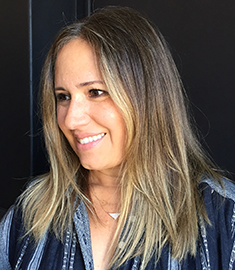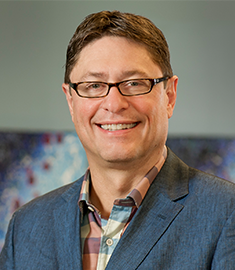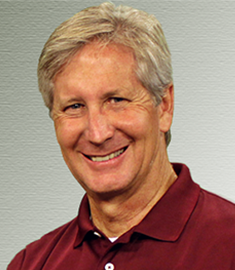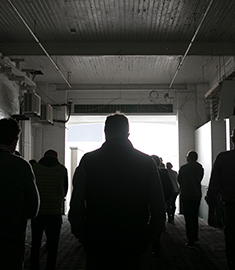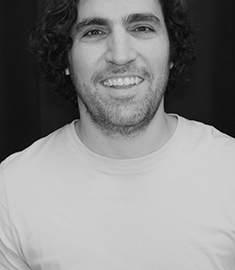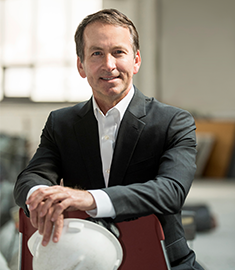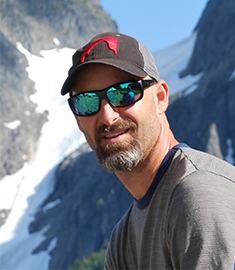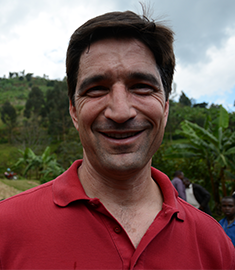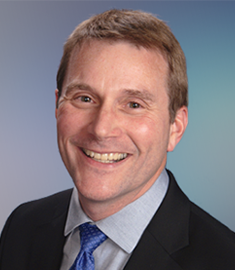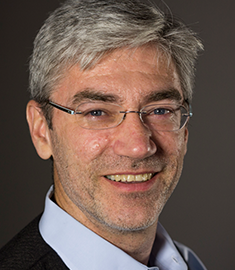Quality Reigns With Paced Growth
I founded my company, Ingrid & Isabel, 14 years ago with one simple product: the Bellaband. When I was pregnant with my daughter Isabel, I hit a point all pregnant women hit — I could no longer button my jeans. But instead of buying a bunch of maternity pants, I fashioned the first Bellaband, an elastic band that let me keep wearing my pants without having to button or zip them. Because it was such a common problem, my friends started clamoring for Bellabands. Today, we have sold millions of maternity bands, holding pants up worldwide.
But companies can’t exist on one product alone. That’s called a one-hit wonder, and I wanted to build an Evergreen business that would last for generations.
Retailers typically look for trends so they can capitalize on them by selling mass quantities quickly. But my prior work experience was at advertising agencies and marketing departments at tech startups, not in retail. Both of these careers were grounded in research and development, so I intimately knew the value of product prototyping and testing among your customers, as opposed to rushing to market.
So instead of reacting like a fast-paced retailer, I acted like a marketer and embraced the Evergreen principles of Pragmatic Innovation and Paced Growth. This choice defines us as a company and a brand.
Our revenues are up about 40 percent this year alone. We’re doubling the size of our staff. And as of July, we have a new exclusive maternity collection for Target, after being on a small portion of their floor since 2008.
But it wasn’t always easy. I passed up many quick-hit trends, like faux-denim ripped jeggings, in favor of Paced Growth, sometimes spending years market testing products on pregnant women.
For new items, like a nursing bra, we go through several stages of research with hundreds of moms. We interview them about their current garments, we have them bring their old nursing bras into our office and show us what they like and don’t like about them, then, we design to her issues. Everyone in my office tries on our prototypes before we ask more women to come in, try on, take home and wear repeatedly for weeks, washing and living in our samples. Then we get their honest feedback. It took us three years to develop a nursing bra we felt confident would work. In comparison, large companies in this category may take about four months to produce a new item.
The result is high praise from moms.
Keeping a close connection to mom has also yielded ideas for new products — like the Afterband. Postnatal clothing is a very crowded marketplace, and we didn’t care for the tone of that space — rushing mom into being small again, being sexy again, and doing it faster with corseted garments. From our research, we knew mom really well and had a hunch that these products and this attitude couldn’t be sitting well with her.
And we were right! Our deep tests revealed she despised most of the postnatal garments on the shelves, but was so overwhelmed with a new baby, she would never return them. Therefore the market stayed stagnant. We went to the drawing board and spent three years developing an entirely different band that appreciates mom’s time to heal and her need for support. Our Afterband grants her the patience to recover from pregnancy at her own pace. And it’s working. Sales are strong and mom’s comments are outstanding.
It’s pricey and time-consuming to do all this research and development. But the commitment pays off, and I’m always glad we do this work regardless. When we launch something, I need to feel absolutely secure it’s the right item for the current batch of pregnant women who are our customers. Perhaps we don’t produce as many items as larger companies, but every single one has been created with a bespoke mindset.
Being Evergreen allows us to be patient in developing the deep market insights and internal capabilities that I know we need in order to grow a sustainable company. If I’d had investors, I’m confident they would have encouraged me to rush our Target partnership years ago, or forced me to take on other significant partnerships to drive short-term revenue growth. Our offerings, and our company, wouldn’t have been ready. Thanks to our practices of Pragmatic Innovation and Paced Growth, we are now.
At the end of the day, I want to make sure our customers know that ours is a company that really cares about mom. She inspires us, not the marketplace.
Ingrid Carney is the founder and CEO of Ingrid & Isabel.
Fighting Back with Purpose
It took getting removed as the CEO of my own company for me to truly comprehend what my team and I needed to thrive. With more than a little grit and humility, I was able to Persevere through that difficult period and eventually return to grow my marketing communications firm, Firespring, into the Evergreen company it is today.
Before I founded Firespring, I launched an AlphaGraphics franchise in 1992 in Lincoln, Nebraska. I encouraged the franchisor to embrace the early promise of website design, making ours the first franchise to open a dedicated commercial website division. When one of my team members had a lucky encounter with the Backstreet Boys at the running of the bulls in Spain in the mid-1990s, we landed the boy band’s website design. Suddenly our website business was flourishing.
Building upon our success, in 2001 I bought out our franchise agreement with AlphaGraphics and launched Firespring (then named Digital IMS) as a website design and software-as-a-service company. I raised about $5 million in venture capital and expanded into 10 cities. We experienced explosive growth, closing one out of every three demos — and then everything fell apart.
After 9/11, everyone began cutting back, and suddenly we couldn’t get face time with prospects. Our close rate changed to one in 10. I made a lot of mistakes before and after that period. One was taking in capital without protecting myself and my employees. I had given too many of our board seats to institutional investors who now wanted immediate change. They wanted us to do more one-off custom work that would bring in fast money — business I’d always rejected because it’s not sustainable. They wanted us to stop serving nonprofits — a slice of our business that wasn’t incredibly profitable but gave us a strong sense of Purpose.
And in 2002, they ousted me as CEO of my own company. I remained on the board as one of seven directors and was assigned to a leadership committee of three people tasked with making decisions on behalf of the company. While I was still the majority owner, investors were essentially controlling every decision.
I had a brief moment where I thought about giving up. But after hitting that low, I gained clarity on what I believed the company should become.
I wanted a company that prioritized meaningful impact and sustainable profitability over chasing revenues for growth’s sake. And I believed we could become that company. I met with my team and apologized for letting them down. I told them I was going to fight for this new vision. We would have a greater focus on nonprofits. The switch would mean less revenue but a leaner, healthier company with a clear Purpose. Given our struggles, employees could have easily left the company and doubled their income. But they were moved by our new vision and stuck by me, even when I wasn’t sure yet how a plan would unfold.
Over the next five months, I swallowed my pride and pleaded to my family and a few friends for loans to buy out our investors. What made it feel worse was my asking them to help fix my mistakes. But it was worth the humility. Taking six months, I was able to regain control of my board and step back in as CEO of our nearly financially devastated company.
Of the 35 employees who were at Digital IMS when I was removed as CEO, 31 remained and stuck by me. Each of these employees took a 50 percent pay cut, and some deferred even more. I launched an open-book system, and together we worked to focus on securing consistent, steady clients and more nonprofits. These nonprofits paid less than companies looking for big creative projects but they gave us consistent monthly revenues supporting our move to Paced Growth. In 2004, we had not only turned the tide — we actually generated a net profit of more than $1 million. And in 2007, we changed our name to Firespring to better promote a national brand.
Today we are a company of nearly 250 people and have more than 9,000 clients in 12 countries and in all 50 states. Inc. magazine named Firespring one of the top 50 places to work in 2016. And we’ve donated millions of dollars to nonprofit organizations. In 2014, we became a B corporation to strengthen our mission to “leverage our people, products and profit as a force for good.”
My path has been one of Perseverance, but it’s also been about the importance of Purpose to our people, and just how loyal and amazing they are if you do the right thing. Nearly every employee who stayed with me during that troubled time in 2002 is still with Firespring today. Together we’re building a strong Evergreen company that makes us all proud.
Jay Wilkinson is the founder & CEO of Firespring.
Three Brothers United Through Division
My two brothers and I inherited my father’s Texas-based pest-control company in 1987. We are as close as three brothers can be. Every day I am on the phone with or emailing them. We share information and ideas and marketing tips at regular meetings at our family ranch in Marble Falls.
What we don’t share is money.
That’s been the key to making ABC Home & Commercial Services work in its second generation of leadership. Family was always our No. 1 priority. So when my father decided to pass the company on to us, he needed to find a way to keep us equal — but he didn’t want to see us fighting over finances. In order to do this, he had to get creative about dividing up his company.
ABC was originally a one-man, one-truck gig that my father bought in 1967. He built up his business in San Antonio and eventually launched franchises in five other cities around the state. When he decided to retire, he sold all of the franchises except three: Austin, Houston and Dallas. He gave these remaining franchises as separate corporations to each of his children, and he remained part owner in all three.
It was an out-of-the-box idea that has worked out surprisingly well — and one that Evergreen companies might want to consider since succession is often a big issue. We brothers work together to ensure consistent quality across the company. If you go to our website, you can plug in your location and that will take you to the specific page for whichever brother is operating there. Over the years, ABC has evolved and branched out into lawn services, security systems, pool maintenance and even HVAC repairs. But we’ve each grown our businesses in ways that make sense for our particular regions. So my company in Austin might not have every service that my brothers offer elsewhere, but if the demand is there, we can ask each other for support on how best to grow that department.
We’ve also been careful not to steal business from each other as we’ve grown. My brothers and I literally have a map of the state of Texas with lines drawn for where each of us can expand in an equitable way. I have central and south Texas. That’s how we keep the peace. We have a saying for this: “Thou shalt not cross into your brothers’ territory or you shall have to deal with Mom.”
We share strategies for growth for the upcoming years, and we love to compete with each other on our P&L sheets. But we’ve all managed to grow without any serious interfamily feuding, which has helped in business and in our personal lives.
But now I’m faced with my own succession challenge — one I hope I can solve as creatively as my father did. Unfortunately I can’t just steal his ideas.
I have three children of my own, who are now grown and considering getting into the family business. My slice of ABC is a lot bigger than what my dad handed down to us, and a heck of a lot more complex because we now have so many new lines of business. There would never be a simple way for me to divide it into three distinct markets.
My plan right now is to give each of my children a third of the business. At this time, I don’t know what shape or form this will take. I also don’t know if it will allow for the kind of family harmony my brothers and I have been lucky enough to experience. We are working together to figure out the specifics and have by no means settled on anything just yet.
My brothers are in the same situation with their close-knit nuclear families, so more and more we are turning to each other to brainstorm this particular issue.
However we end up dividing our company, I’m working hard to keep the lines of communication open so that everyone feels they’ve been heard. I believe that finding a way to keep my children happy, motivated and connected — just as my brothers and I are — will keep our family business going into the next generation.
Bobby Jenkins is the Owner of ABC Home & Commercial Services.
Fighting for Growth and Innovation in Ali’s Hometown
“I’m gonna whup him,” an outraged 12-year-old Cassius Clay cried out from the steps of Louisville’s Columbia Auditorium. It was 1954, and somebody had just pinched the young Clay’s red Schwinn. A passerby, a police sergeant named Joe Martin, happened to be heading into a basement boxing gym in that auditorium, where he was a part-time trainer. He asked Clay pointedly: “Do you know how to fight? You should know how to fight if you’re going to whup somebody.”
Turned out to be a truly inspired question.
Clay wiped away his tears and learned to fight. He grew to become Muhammad Ali, Olympic gold-medalist, three-time world boxing champion whose losses are as famous as his wins, influential civil rights and spiritual leader, folk hero, flawed and beloved American cultural icon. Oh yeah, he’s also known as “The Greatest.”
Growth, excellence and innovation? More than 60 Evergreen business owners and I discovered something about all three in another basement in Louisville, seven or eight blocks north of the very spot where Ali had his “red bike moment.” You have to fight for them. You may get pummeled, you may get confused before you find your way forward. Before there is growth, excellence and innovation, there is almost always anguish.
On Oct. 10, we gathered at the 21c Museum Hotel for the Tugboat Institute’s fall Exemplar retreat. Playing role of Joe Martin, trainer and interlocutor, was Edward D. Hess, the noted Darden School of Business professor, author of a dozen books and adviser to many a high-performance company. If any of us was hoping for a few nifty, neatly packaged tricks for how to grow our businesses, Hess made it clear early on they weren’t coming. “Growth is change,” Hess put it, in his lilting Georgia accent. “And change is hard on human beings.”
Over the next two days, Hess led us through a rogue’s gallery of concepts for businesspeople who want to turbocharge their growth. My mind was soon spinning. “He packed a lot in his workshops for us,” Dave Whorton said later. “Ed has an amazing ability to synthesize his and so many other ideas into a comprehensive framework that spans Carol Dweck’s Growth Mindset to IDEO’s innovation methodology to Toyota Production System to many others.”
We weren’t expected to shadowbox. Hess urged us to look to each other for help. Whorton gave us proper sparring partners, fellow Tugboaters whose companies were of similar nature or weight class: heavy, welterweight, bantam, etc. My fellow pugilists: Conni Reed, of Austin-based Consuela; Ross Evans, of Oakland-based Xtracycle; and Carrie Van Winkle Greener of Pappy & Co. and Ryan Waterfield of BigLife, the last two each based in Sun Valley, Idaho.
The first day focused largely on growth. Each of us had to figure out what kind of growth made sense for our companies. There’s no one-size-fits-all growth formula, particularly for Evergreen companies that aim to not only grow and profit but also fulfill a larger purpose, Hess argued. He urged us to look at our growth plans as part of a four-quadrant matrix, with some “growth initiations” aimed at achieving immediate results and others expected to produce a yield in two or more years. Some of them should boost top-line sales and others bottom-line profits. Which mattered most? It depends on what kind of company you lead, Hess said. Regardless, it is important to figure out a way, he said, to set plans in all four categories.
Hess passed from table to table, alternatively hectoring and encouraging, always jabbing questions: “What could I be doing,” he told us to ask ourselves, “that I’m not doing or that I’m doing poorly?” “What could happen in my industry that might mess things up, and how should I respond?” For more inspiration, look at the seven pointed questions on slide 19 of your decks, he urged us. Title: Scaling Boosters Checklist.
Day two, which focused largely on innovation, brought more thudding shots to the frontal lobes. Drawing upon material in his newest book, Humility Is the New Smart, Hess hit us with a flurry of ideas meant to help us defeat what Nobel-winning Princeton psychology professor Daniel Kahneman would call our “inherent inability to acknowledge the full extent of our ignorance.” Innovation is hard because it demands that we welcome risky behavior and seek out discomfort, Hess said. So embrace the pain.
It’s a bad habit of smaller firms to dismiss the need for small improvements and operational excellence, calculating that mistakes will be paid for by the innovations and rapid expansion. Hess insisted that even small, fast-growing firms should aspire to reduce operational mistakes. Meanwhile, big, well-established firms are so good at minimizing mistakes that they often can no longer tolerate the mistakes required by innovation. Only the great companies learn to balance the tension inherent in operational excellence (making no mistakes) and pragmatic innovation (lots of experiments and mistakes).
By the way, for the often capital-restricted younger Evergreen companies, Hess warned us, growth itself can be toxic if there’s too much. He tartly dismissed the axioms that businesses must “grow or die” and that “bigger is always better” and so on. “These are myths,” he said.
For example, if an Evergreen firm eagerly accepts too many new orders from eager customers with a long pay horizon and can’t finance the manufacture of enough products to fulfill the rocketing demand, it can get upside-down or swamped in debt. You’ll need either braver lenders, new Evergreen equity partners or a good bankruptcy attorney. Don’t believe it? Tugboat provided us all with an Excel file that allowed us to calculate our self-financeable growth (SFG) rate based upon a Harvard Business Review article.
The tool allowed some of us to realize that the trick to properly financing high growth is often raising prices a little (perhaps disappointing a few customers), reducing waste, improving margins and improving your cash cycle. You get to stay in business and stay away from the exit-oriented investor path. Think of it as the business equivalent of Ali’s rope-a-dope — a strategy that looks tentative and unflashy, but will win big in the long run.
By Thursday afternoon, some of us felt like dopes on a rope. I found Tugboaters wandering glassy-eyed on the streets, processing how to create new “innovation processes” that, as Hess put it, would help us lay off harmful patterns of “ego affirmation” and promote the innovation culture and behaviors that we all hoped to see from our employees. Some crawled to the bar across the street from our hotel, determined, they said, to sort all this out over a beer. Some looked wearily ahead to the visit that Aric Andrews had planned for us all to Churchill Downs that afternoon, and the dinner and bourbon tasting my sparring partner Carrie had planned for that evening. And honestly, a few of us were flat-out annoyed.
Hess wasn’t. He looked around, ever the avuncular boxing trainer, quietly satisfied as people worked hard to formulate and articulate their new growth plans with their peers. Innovation and growth often begin with pain. Or a stolen red bicycle.
Gourmet Popcorn With a Purpose
Last year, Double Good made a decision that defied the most fundamental principles of business: We decided to give 50 percent of every dollar to charity. While this decision seemed to defy logic, to me it was the only logical next step in defining our Evergreen company’s Purpose.
Walking out of my brother’s popcorn shop in 1998, I wasn’t thinking about purpose. One never imagines they’ll find their calling at the bottom of a bag of popcorn. For me, popcorn meant joy and I wanted to share this joy with others. I asked about working with Popcorn Palace, the company he licensed from, and discovered they were facing bankruptcy. I was able to acquire their name and a list of their customers for $2,600.
By the end of that year, operating from a small warehouse in Northwest Indiana, we had brought in $110,000 in revenue. I went about creating new markets for our product: corporate gifts, wholesale, gift baskets, e-commerce and private label. By 2005, Popcorn Palace was bringing in over $2 million a year, attributed mostly to big accounts like Costco and QVC.
These big-box stores, where little guys like me dream of doing business, loved the popcorn, but that love quickly got lost in the shuffle of spreadsheets and corporate politics. One day, I looked at what we’d built and realized we had been doing everything “right,” but the joy was gone.
Around this time, as a side experiment, we set up a small fundraising channel in which students and organizations could sell popcorn and retain 50 percent of every dollar.
Following one particularly deflating call with a Costco account manager, I noticed an envelope on my desk addressed to me in crayon. The letter inside was a thank-you from a boy in Seattle who had just returned from a band competition in Washington, D.C. He said our fundraiser had enabled him to take this important trip with his classmates, and he stated how much he loved Popcorn Palace.
I felt as I did that day in 1998 leaving my brother’s store — I knew everything should change. I’d rediscovered my purpose in the most unexpected of places. My dreams for Popcorn Palace shifted in that moment from growing revenues through traditional channels to growing people’s potential through their sales of our product. Over the next few years, we ended our relationships with big-box stores and eventually eliminated all of our wholesale accounts. We kept two channels — corporate gifts and e-commerce — but it was our dedication to fundraising that finally gave our company Purpose with a capital P.
As time passed, fundraisers became a bigger part of our culture and our business. We tweaked the product lines and made the process more efficient for our customers. We then turned our sights to the other two remaining channels, corporate gifts and e-commerce. They were bringing in about a million dollars a year, but it was obvious they weren’t fulfilling our corporate Purpose. There was only one answer: 50 percent of these sales should benefit a cause as well.
We had to make some big changes to accommodate this dramatic shift in vision. We transitioned to a self-management structure that made us leaner and brought those within our organization closer to our Purpose. We began to move marketing from traditional to social media. We eliminated many products and redesigned our packaging, which reduced manufacturing and design costs.
It was last year that we publicly announced we would be giving away 50 percent of all of our sales, first to a variety of partner charities, but eventually to our own foundation, which benefits kids with special needs. We also changed our name to Double Good. There’s an old proverb that says when we share our joy, it’s doubled — that’s the principle behind everything we do. Delicious popcorn? Good. Donating 50 cents of every dollar to help the world be a better place? Double Good.
Along with the excitement and challenge of the rebrand was an initial hit to sales. The first quarter of this year was the first time since our 1998 launch that we have seen a decline. It was a tough start to the year but I am happy to share that our sales are recovering nicely, and we expect that we will be more profitable than ever before.
In fact, for our 19-year-old Evergreen company, this is just the beginning.
Timothy Heitmann is the founder & CEO of Double Good.
From Rural Kentucky Poverty to Chief Executive
As a child, I never imagined that one day I would be the president and CEO of the largest architecture, engineering and interior design firm in Kentucky. I grew up poor on a tobacco and dairy farm in rural Kentucky. It was land given to my French ancestors for their military service in the Revolutionary War, but that makes it sound more glamorous than it was. The reality of life on the farm was that times were tough. As my grandfather used to say, “We were land rich but money poor.” Due to some unique family challenges and the declining agricultural economy of the 1970s, we were essentially living as sharecroppers on our own land. We lived in a tenant house on the farm that my mother fixed up. Despite having no plumbing in the house until I started school, she did her very best to make our little farm house a home.
Food was scarce, and there was certainly no extra money for clothes and toys. But here’s the thing — we were happy. That’s the way it is with poverty sometimes. You often don’t know what you don’t have. We worked incredibly hard in the tobacco fields but we didn’t know anything different; that’s just the way it was. We worked together as a family, including all five of my siblings. My father worked harder than anyone I have ever known. To this day he has a sense of peace that can only come from a hard day’s work. He instilled in me a work ethic that has served me well throughout my life, but that would also haunt me as I struggled later to find a work-life balance.
But for now, the hard work was paying off. After the tobacco crop was harvested, my brothers and sisters and I would pick up the discarded leaves in the field and on the barn floor and sell them. This gave us a little extra money that we would share. Early on we would pool our money to buy something together, like a family motorcycle, or save the money individually to buy a first car or add to a small college fund. We all excelled in school, both in academics and extracurricular activities. My parents didn’t have the opportunity to attend college, but there was never any doubt that we would. They emphasized that family, hard work, love and education were the keys to our success in life.
In 1980, I entered the College of Design School of Architecture at the University of Kentucky. As a child, I was artistic and creative, the resident artist at home and at school. Always sketching or painting; school murals and stage sets. Coupled with my love for the land and nature, I found beauty in the rural outbuildings and was fascinated with construction and fixing farm machinery. I would later come to understand that my early passions reflected the fusion of art and science that is architecture. I can still remember the dappled sunlight filtering through the slats of our tobacco barn and thinking that this was the most beautiful place on earth.
While I watched my college classmates navigate through the architecture program, I had to take my time. In order to afford college, I had to work several jobs, which meant I didn’t have as much time for classes. As it turned out, five of the six siblings in my family were attending UK at the same time. Once again, we all took care of each other as we made our way through college. It took me seven years to get through a five-year program (which earned me a professional degree: bachelor of architecture), but it was worth it. At one of those jobs, at a local pizza parlor, I met the woman who would later become my wife and the mother of my children. By the time I graduated in 1987 with several design awards, I was married with a bouncing baby girl.
When I landed my first job at an architecture firm, I thought my hardest days were behind me. But I was wrong. My first boss, who was a fine man and a good architect, was not the kind of mentor I needed. I was young, talented and ambitious, and he was more than happy to give me all the opportunity I could handle — and then some.
He gave me a tremendous amount of responsibility, which I eagerly accepted. It was an exhilarating but ultimately exhausting combination. I was helping manage the office, running projects and getting some amazing opportunities to contribute my design skills toward things like designing a church (St. Margaret Mary in Louisville), but at a time when I wasn’t fully prepared for that level of responsibility. My passion for design was driving me. To compensate, I worked 70-hour weeks. Then, on the weekends, if I wasn’t in the office I was often back on the farm helping my parents.
My work ethic had always helped me succeed in the past but in this case — it turned on me. I had little time for my growing family; we now had three children. On the farm, family was everything as we worked together but now, work was taking me away from them. I was torn between wanting to be successful and a good provider versus the thing that was most important to me: time with my family. My children would say I was a great father back then, but at the time, the work was taking a toll on my marriage and we were struggling. After 15 years with the same firm (intern to vice president), I realized I had to make some serious changes.
My first move was to find a new job. I wanted to be with a firm that was larger and more established, where I wouldn’t have to wear so many different hats. I found that in Luckett & Farley, a 160-year-old architecture and engineering firm in Louisville. There I had access to many great people with new and different ideas about work and life. I became close to the vice president for business development, Belinda Gates. Belinda was the kind of person who made you feel good about yourself. Everyone liked her and she was good at building relationships and creating winning work. She encouraged me to follow my passion for design, and together we brought a lot of work into the office as I began to grow our higher-education market.
My work-life balance was improving, but it was too late to save my marriage. While going through a divorce, I asked the leadership at L&F to allow me to take a hiatus from the firm. I had been offered a job rebuilding the middle and high school campuses in our local school district. The time away allowed me to spend much-needed time with my children (who attended school on the same campus) and build a closer bond than we ever had before. When the projects and the divorce were finished, Luckett & Farley welcomed me back as the market director for higher education. I would later become a vice president and ultimately a senior VP to help lead the firm.
Earlier this year, I took over as president and CEO and surrounded myself with a leadership team that shares the same values. When I sat down to think about the way we wanted to lead the firm, I reached back to the principles I learned on the farm: hard work, yes, but living a life with Purpose, having Perseverance and being family- and People First-focused is the most important. I realized that Evergreen principles have always guided me.
So now I’m working hard to keep those principles in place, not just for the good of our employees but for the good of our firm. We try to lead by example. When we work, we work hard; in fact, “we kill it!” But when the day is over, I turn out the lights and head home at a reasonable hour and (when I can) I turn off my cell phone on weekends. We make sure that our employees know we are working for something bigger than just money. We want to be client-focused and employee-centered — that’s our sustainable business model. We’re planning on Luckett & Farley being around for at least another 160 years.
When I can, I still go back to the farm to help my father (who is a sprightly 77) and brother set up their garden in the spring. The tobacco barn that once stirred me to think about architecture is no longer there. Instead of focusing everything on my work, I take the time to enjoy my family and the beauty around me. These days I find great comfort in the simplicity and peace of where I started.
Aric M. Andrew is the President and CEO of Luckett & Farley
Remote Workforce, Close-Knit Culture
With 43 percent of all Americans now working remotely, according to Gallup, many businesses are dealing with the problem of maintaining company culture with employees who might never be in the same place at the same time. The trend presents an interesting challenge for Evergreen companies that make putting People First a central part of their business philosophy. But for us it’s more than an interesting challenge — it’s critical.
At my four-year-old hospital staffing company, CT Assist, we have 10 administrative employees working remotely full-time and about 40 “travelers.” Our travelers are cardiac- and orthopedic-surgery physician assistants, nurse practitioners and perfusionists who fill in at hospitals that are short-staffed. We hire the full-time travelers as W-2 employees, and the hospitals then enlist CT Assist to provide the service. We are registered and operate in over 20 states, so this means our folks are often on the move as they travel to standard 13-week assignments.
From the very beginning, my partner, Scott Yoder, and I wanted to make sure our Evergreen company lived up to the People First principle. We created the company because we saw many talented physician assistants leaving cardiac surgery because they were burned out. Our goal was to make CT Assist a better place to work — to provide people who have chosen this career with jobs, schedules and lives that they love. We are their voice in negotiating rates and preferred work hours. We attract great candidates with benefits like vacation time for our travelers (not standard in our industry), excellent health insurance, matching 401(k), and ongoing training and educational opportunities.
When your team is highly dispersed across half the country and has little reason for routine interaction, how do you ensure your company values are being upheld across all employee and customer experiences?
First and foremost, our culture prioritizes relationships, so the office staff is on the road a lot getting to know our travelers. We visit them at their assigned hospitals to make sure their working experience is ideal. We take them out for dinner or drinks — whatever they want to do in order to build up our personal connection. This is how we learned that one of our employees had been placed in a miserable apartment situation. CT Assist immediately found a new housing assignment for this person and cut our losses. It’s good for people who might be in a new state every couple of months, in temporary housing, to have that connection and to know that we’re a team that has their best interest in mind.
In order to make sure everyone in the office is aligned and connected, we all join a 10- to 20-minute call every single morning, no matter where we are. We share wins and worries, a quote of the day and even a few laughs. It’s also good for the team to hear us praising decisions that were made where someone at CT Assist did the right thing — not for profit, but to support our provider or customer. After all, that’s how cultural values are disseminated and hopefully then emulated.
The application Slack has helped us lose the formality of emails and the multiple phone calls required to communicate with a dispersed staff. As counterintuitive as it sounds, the various channels Slack provides are great for quick conversations, which has improved communication and offered an instant team connection and understanding even to new staff.
We just launched a company email newsletter. It’s still in the early stages, but I think it will, again, help with bridging the distance between us. I love the idea of people seeing pictures of each other and hearing their stories. It helps people feel less isolated on assignment.
Something else we recently implemented is called Intentional Engagements. If someone goes above and beyond in their work, we send them a gift card, flowers to their spouse if they are traveling, or a simple thank-you note. It’s just another way of showing people that while they may be doing most of their work, they are very much part of our team, and we appreciate their diligence.
Our methods to keep our employees connected will surely keep evolving. Right now we host semiannual retreats for our office staff, but perhaps we’ll one day be able to do this for everyone.
The biggest challenge for us as we grow is empowering our newer managers with the ability to make People First decisions. Often, these folks are coming from bigger companies with less employee-oriented cultures. We believe the best way for them to learn is by showing — and all the techniques I’ve mentioned help even remote managers clue in to our relationship-based culture.
At the end of the day, we have strengthened the sustainability of surgery programs across the country. But we have also sustained a strong Evergreen company, even as our network expands throughout the nation.
Jairemy Drooger is the Co-founder & COO of CT Assist.
Encouraging My Employees to Take Risks Has Paid Off for My Evergreen Company
Although I’m an introvert by nature, I’ve always worked hard to push myself outside of my comfort zone. I initially trained to be an engineer, but when I was 25 years old I switched paths and went to business school to become an entrepreneur instead. I spoke no Spanish, but when the opportunity arose in 2000 for me to move to Barcelona for my wife’s job, I gave up a partnership in a consulting company I co-founded and jumped at the life opportunity — a huge risk for someone saddled with a mountain of school debt just starting a family.
But those risks have always paid off.
In Barcelona, I pragmatically took up writing a manual on project management for the security industry (my entrepreneurial field when I was in the U.S.), but soon noticed there were no boutique hotels in one of Europe’s coolest cities. So I took a risk and tried to start a boutique hotel.
Meanwhile, one of my contacts from writing the project management manual was a California businessman who was running a 13-person security agency with no exit strategy. That contact led me to my greatest risk of all: In 2005, I told him to give me 100 percent control of the company on day one, and I would buy him out in 10 years.
This was the risk that would consume the rest of my professional life. I turned that business into Northland Controls, an Evergreen company that installs, integrates and manages security programs for companies around the world. We have 260 employees and will bring in $75 million this year. Much of our growth comes from Pragmatic Innovation. To spur that innovation, I’ve encouraged our people to take their own risks as often as possible.
When I first came on as CEO, I wasn’t sure how to instill a risk-taking ethos in a group of grown adults. Conference-room icebreakers didn’t seem quite right. Then, almost by accident, an employee showed me the way.
In 2008, I asked one of my technicians to go to India to oversee a project there. He was initially horrified by the poverty and seemed like a fish out of water. But within three days, he adapted so well that he would convince the tuk-tuk drivers to let him drive to the project site, with them in the back seat. At some point, he discovered that there was a 2,000-kilometer tuk-tuk race across the country, so I sponsored him to enter. It built his self-confidence and showed him that he could survive without any sort of technology. It also made him eager to explore the world on behalf of Northland. In one year he traveled to 25 countries.
This was just the beginning. I realized that trips and challenges like this communicate to our employees that Northland encourages and honors people who are willing to take huge risks. It has also helped us expand internationally as our employees have immersed themselves in other cultures in ways our competitors would never consider.
Since then, I have sent people to rural Uganda and Rwanda to help install solar panels, and to Armenia, the Nagorno-Karabakh Republic and Georgia to ride 4x4s in the Caucasus Mountains, as well as to the American Southwest to expose our folks to the American can-do spirit. We’re heading to Nepal in 2018. Of course, not everyone is up for a rugged trip to rural Africa — and I understand that. Recently we worked with GRID Alternatives on a “solarthon” day in the Bay Area, where 10 of our people installed solar panels for a low-income family in Menlo Park. We are now working with GRID Alternatives on a project every six months. All of these experiences, which often include a humanitarian aspect, are designed to encourage risk-taking.
Not only do these challenges, which are all voluntary, help our people step into uncomfortable situations and learn to expand their horizons — they also help them bond. Employees of all levels must work together as equals. It’s a really amazing experience that encourages everyone to trust each other.
It’s also helped us grow our company’s bottom line. After crossing the Caucasus, our appropriately risk-averse CFO took on the risk of building up our overhead, a painful decision that nonetheless has allowed us to scale up the rest of the business. After a tuk-tuk trip in India, my managers realized the importance of picking up a phone and talking to the locals rather than sending endless emails with instructions. That mindshift has translated to us having a stellar record for getting our work done on schedule in a country where deadlines are notoriously difficult to meet. And after trekking through Rwanda, one of our technicians was able to talk to and bond with colleagues from across the different disciplines in our company, and realized he wanted to be an application engineer. When we got back, he got a chance, and within a year was embedded with one of our clients (a well-known social media company), and quickly became a crucial part of our value to the client.
I have a team of people who are very close and who are comfortable in any sticky situation, no matter the country. That’s a vital advantage in the security industry, where we work with fast-moving customers and rapidly changing technologies.
In my life I’ve written two great business plans and gone out looking for money twice — once with a plan to write apps on PDAs (the clunky precursors to smartphones) and once for my hotel in Barcelona. From those experiences I realized that I am not good at selling myself and convincing people to invest in my ideas.
But I was able to use the knowledge I gleaned from those experiences to build Northland Controls. We have grown the company to $75 million in 12 years and we did it with no business plan, no sales and marketing people for the first 10 years, and no cost controls. Those are the kind of things that would have driven investors crazy. I’m happy not to have to worry about that.
Pierre Trapanese is the CEO and owner of Northland Controls
How Pragmatic Innovation Helped Me Save My Faltering Company
I’m an accidental CEO. I stepped into this position four years ago when the company I was working for, Wall-tech, almost went out of business.
At the time, I was a minority stockholder and vice president. Wall-tech, which specializes in framing, drywalling and finishing, had been hit hard by the recession. We depend on new construction for much of our business, and as everyone remembers, new construction all but dried up after the housing bubble burst. The situation was dire and our board of directors was weighing liquidating the company. But I loved Wall-tech and couldn’t bear to see its 100 employees let go.
So I begged the majority stockholders for a chance to turn things around. They gave me three months.
Instead of giving in to the panic I felt, I moved into survival mode. My background was in architecture and construction, not business management. So I hired a good accountant and a CFO to help me figure out a plan. I pulled every penny out of my savings account and lined up a few personal loans, a business loan and an operating loan. I managed to cobble together around $2 million, enough to buy out the three former partners and keep all the employees on staff.
And then my real work began.
The buyout happened in the spring of 2013, and in order to get another bank loan that fall, we were going to need to show a good financial report card. Wall-tech had operated the way a lot of small businesses do, without a contingency plan. But now, in the midst of a financial crisis, I had to develop a plan that I could quickly implement and easily execute. Of course, execution is the hard part.
So I embraced a new concept for the company: Evergreen. In particular, I started promoting the Evergreen principles of Pragmatic Innovation and Profit. I looked at what was really going on in the company and I used that information to help me make decisions about the future.
I started with forecasting and strategic planning so that we could see where the company was headed over the next five to 10 years. Wall-tech was full of great people but had some underperforming divisions that looked like they could eventually sink the company. So we made the tough decision to downsize by cutting those divisions way back and selling most of the equipment to make sure we’d have no temptation to return those lines of business to that size again.
But the team strategy and forecasting meetings also revealed some promising news. It looked like there would be major labor shortages in the construction industry when the economy picked up, which would ultimately impact our customers’ ability to meet schedule demands. We decided to take a crack at the prefabrication-building-components division because the ready-made structures would allow us to adhere to our schedule and maintain our commitments. We were able to jump into the market with both feet and have been very successful there.
I’ve long been a devotee of Jack Stack’s Great Game of Business, so I implemented some of his teachings right away. Inspired by his open-book management ideas, we started doing financial-literacy training. Our company is spread across three states, so it can be hard to communicate sometimes. We set up a better system to keep key employees aware of our finances on an ongoing basis so they could make smarter decisions that would help our bottom line.
I also decided we should move to a Stack-inspired employee-ownership model. We made all of our office workers, foremen, superintendents and subforemen part of the employee-ownership plan, which was hard at first. Most of these folks would have been happier with cash than with stock, and some thought it was just a trick to make them work harder.
To make them more comfortable, I hired coaches from Jack Stack’s Great Game of Business to work with us. They helped us set up management teams where people could slowly become more involved in decision-making. We also started doing quarterly leadership meetings to encouraged people to step up and take responsibility.
Something else that really made a difference after the buyout was taking the politics out of the good-ol’-boys network. We got rid of nepotism, which was a terrible morale killer for many years, and made everyone’s job performance based.
It hasn’t always been an easy process. About two years ago, we had to lay people off. We lost track of our growth — it’s tough in our industry to always gauge where and when workers are needed — and committed ourselves to much better forecasting of seasonality and a better long-term mix of core versus seasonal employees. And of course, we then had to rebuild trust among the employees, which takes years. We don’t want to make that mistake again.
I remember one time, early on, trying to celebrate a win for our team by sending a note inviting everyone to meet for drinks at a tavern after work. Three people showed up. They just weren’t used to management and field operations mixing together. That told me we needed to work on culture and communication. Now we make a lot of effort to do group cookouts so that everyone knows they are welcome.
Today, I have 330 employees on staff; 84 of them are employee-owners. We’ve taken on over 50 apprentices in the last few years. We train people up and we make sure they know they are cared for. We brought in close to $18 million in revenue three years ago and we’re poised to bring in $40 million this year.
Thankfully, my risky buyout and commitment to Evergreen are working out — for me and for my employees.
Pete Braun is the Owner/President of Wall-tech.
How Pragmatic Innovation Makes Creativity Part of the Process
At my company, Azavea, we create software and data analytics that help people see the bigger picture. Data about how buildings in Philadelphia are using energy can help companies all over America fight climate change. Public information about preschools in Chicago can be the basis for a simple application that helps people find local early-learning centers. Computer vision techniques applied to satellite imagery can detect changes in shipping and fishing activity.
I also try to see the bigger picture when it comes to running my company. Azavea’s mission is focused on both social impact and advancing the state of the art through research. Our business model is to take existing data sets and find novel ways to help people glean useful information from them. That requires a lot of creativity, but how do you help a comparatively small workforce find the time for that kind of flexible thinking when everyone has lots of tasks they need to accomplish every day?
We can’t build more hours into the day, but in the early days of the company, one of my colleagues realized we could influence how our colleagues spend their time. Following in the footsteps of research and development programs at Google and 3M, he proposed what we now call our Research and Learning Program, or “10% Time.”
The program works like this: Employees create a personal research or learning project focused on something they care about. Then they can spend up to 10 percent of their working hours on it. The projects should both cultivate each person’s interests and be true to Azavea’s mission to have a positive civic and social impact. This can include learning a new programming language, taking a Coursera course, testing a new technology, contributing to an open-source project or even doing pro bono work — it’s all good.
Of course, deciding on a 10% Time policy and getting everyone to embrace it are two different things. Like many Evergreen companies, Azavea is strongly mission-based. We believe that we can make the world a better place using information that is already out there. That kind of company naturally attracts passionate workers who want to do the best they can on the projects on their desks. Asking them to take time to think about things that might not relate to a current deadline requires a companywide commitment to learning and sharing knowledge.
To help get things moving, I collaborated with software developer Steve Meyer (who had originally suggested the 10% Time program) on a project focused on real estate, a shared interest. We wanted to help people make better decisions about where to rent or buy a home by blending information about lifestyle interests with market information. For example, I don’t own a car. Instead, I ride my bike to our Philadelphia office. My wife and I enjoy both cooking and eating out, so we want to live within walking distance of a grocery store and restaurants. Another home buyer might be more concerned about being near parking, child care and a spouse’s workplace.
Steve and I used public databases related to home sales and community assets and pooled our energy to create a program we called REX, short for Real Estate Explorer. It was a sophisticated product, but we were a small company with no capital and we ultimately could not grow the geographic footprint enough to make it viable. But while any failure is disappointing, we had learned a lot about combining large amounts of seemingly incompatible data sets into one online application.
We have since been able to use elements of that knowledge to build GeoTrellis, a software library that helps power software for everything from water-infrastructure planning to crime-risk forecasting. We’ve also leveraged this and other work to build OpenDataPhilly, which enables local citizens to sort through and search 350 data sets on 14 broad topics that touch upon various aspects of life in Philadelphia including the arts, public education, and health and human services organizations.
Others have used their 10% Time to experiment with open data released by the federal government. When Azavea was invited to participate in The Opportunity Project, an Obama White House initiative, two colleagues, Kathryn Killebrew and Mike Maurizi, combined public-transit data with housing and economic development data to create TransitAnalyst.com, an online tool to help citizens and communities access critical resources within reach of public transit.
For Azavea, 10% Time has been an important tool for Pragmatic Innovation. Because we are an Evergreen company working at the leading edge of technology, everyone must be part of the R&D department in some way, as it is the lifeblood of our business.
It has also helped with attracting and retaining the best people. The 10% Time program is frequently cited as a key benefit in interviews, and we engage in several activities to both encourage and celebrate the program’s outcomes. Every month we hold a short all-hands meeting where each person has a chance to summarize their progress on their 10% Time projects. Each quarter, we gather at the end of the workday with some beer and snacks and listen to everyone present more detailed versions of their projects. It’s a great chance to hang out, have fun and learn from one another. The projects also provide unique opportunities to share what we are learning in blog articles, at conferences and as source code we make available to the public. By sharing what they learn, folks have an opportunity to develop their writing, documentation and presentation skills, but the overarching theme behind all of these ideas is that it is more helpful, more fun and more impactful to share what we learn with others.
Though I am no longer writing software code, I still try to use my own 10% Time, and I mostly focus now on learning how to run a better company. This means things like going to conferences, reading about other companies, evaluating other Pragmatic Innovation programs and even joining the Tugboat Institute.
Although not every project pans out right away (or ever), our approach to Pragmatic Innovation has had an incredibly positive impact on our firm. My colleagues feel empowered to try new things, and even sometimes fail. This last point is important, because failure, which closes paths and opens new ones, is critical to both learning and innovation. The results have been so positive — in terms of new lines of business, products and capabilities — that we see any failure as a necessary and very reasonable price to pay.
Robert Cheetham is the CEO of Azavea.
